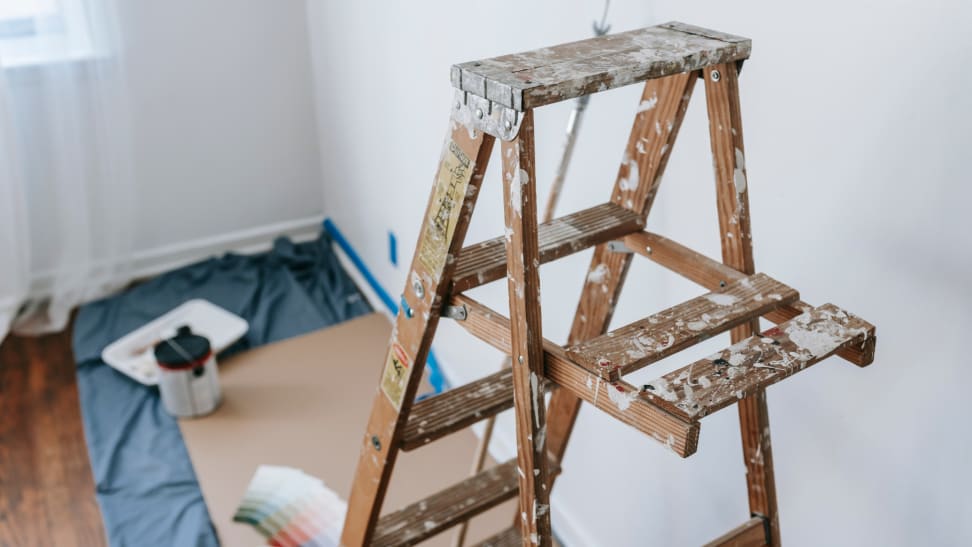Everything you need to paint a room like a pro
You can check this off your home improvement list.
 Credit:
Canva / Blue Bird
Credit:
Canva / Blue Bird
Products are chosen independently by our editors. Purchases made through our links may earn us a commission.
Nothing breathes new life into a room like a fresh coat of paint. Within a day, you can give new color, character, and energy into a space that was previously dull and drab.
You don't need to hire professionals. Painting a room is one of the easiest home improvement jobs a homeowner can do themselves. But you'll need a plan and the right tools to ensure even coverage and a long lifespan with no peeling.
From picking the right type of paint, to shopping for the right brushes and rollers, to getting straight lines, to easy cleanup tips, here's everything you need to know to paint a room in your home.
Once you're done, give those brushes a rinse and move onto the rest of the house with our guides for painting your ceiling, kitchen cabinets, furniture, and staining your deck.
Paint colors: Consider the light quality and sources in the room
Choosing the right paint color for your room is the single biggest decision. And because it costs nothing to look, feel free to spend as much time as you want in this stage. Literally every color under the sun is possible, though of course, you'll probably have some preferences or ideas from the start.
Paint doesn't just create ambiance on its own. It reflects and absorbs the light and colors around it. Consider the lighting in the room. North-facing rooms tend to get a more blueish light. South-facing rooms tend to get a warmer, yellower light. Morning light brings out yellows. Evening light often creates oranges and reds.
Artificial light is another consideration. Some bulbs give off cool blue tones, some are neutral, and some are warm. Fortunately, it's much easier to swap out your light bulbs than it is to change the orientation of your house to get more southern exposure. So stop by the light bulb aisle at your local hardware store to look at all the options in modern light bulbs.
For choosing the paint color itself, you can purchase paint color fan decks to browse colors from your home rather than the home improvement store. Another option is downloading a house paint app to test out the colors digitally—major brands like Benjamin Moore and Sherwin-Williams have color apps available to download.
With all of this in mind, don’t be afraid to do your research and play around with paint samples. You can order samples from all major paint brands to get a better feel for what paint is right for your room.
Picking a finish: Shine on, or don't
Semigloss, matte, satin—you’ve got paint finish options. Choosing the right paint for you can be based on aesthetic preference and size of the room. For most basic jobs, Dan DiClerico, home expert at HomeAdvisor, recommends an eggshell finish, also known as a satin finish. “It’s in between matte and semigloss, so it’s durable and wears well but isn’t too shiny.”
As for water-based versus oil-based paints, the majority of interior paint projects call for water-based paint, also known as latex paint. Oil-based paints contain toxins, making them a more hazardous choice for room painting. Typically, oil-based is used for smaller projects, like painting pieces of furniture
Invest in high-quality paint: Don't cheap out
A common mistake that DIY painters often make is not investing in the appropriate paint for your project. “Economy paints, or those costing $10 to $20 per gallon, will go on thin,” says DiClerico. “You’ll have to apply two or even three costs to get good coverage.”
That isn’t to say you have to break your budget in buying your paint. “There are many high-quality options in the $30- to $40-per-gallon range from brands like Behr, Benjamin Moore, and Valspar.”
Buy enough paint, and keep some left over for touch-ups
To determine the amount of paint you’ll need for the job, try a paint calculator like this one from Sherwin-Williams, which takes into account doors, windows, and room size. It’s always nice to have extra paint for touch-ups, but there’s no need to have an excess amount of paint left over after the project’s done.
If you haven’t ordered your paint already, orders may be backed up on delivery sites like Amazon during this time. Try ordering directly from places like The Home Depot or Lowe’s for delivery or curbside pick-up.
Always make sure to keep some leftover paint. You'll need it later for touch-ups once all the inevitable scratches and scuffs start reappearing. Be sure to label the paint bucket with the name of the room, the paint color, and the brand in case you need to reorder.
If your leftover paint dries out because you didn't close the lid properly, it won't do you any good. If the can was damaged, the hardware store sells inexpensive replacement cans. Buy it and label it clearly. Your future self will thank you.
Prep the space
When it comes to painting a room, beginning with a clean slate is essential. “It starts with proper prep work,” says DiClerico. “Unless you’re painting fresh drywall, some level of surface prep will be needed to achieve a pro-grade A+ finish.”
Make sure your walls are completely ready to go by scraping and sanding off any cracked or peeled paint from a previous paint job. Give your walls a good clean (soap and warm water will do) and remove any excess dust or buildup with a vacuum if necessary. Let your walls completely dry overnight.
Next, ensure you have a drop cloth to cover the entirety of your floor space to avoid any unwanted paint splatters. Move all of your furniture to the center of the room and wrap them up in plastic or a covering of your choice.
To keep your windows and walls paint-free, there are a few tools you can use. “A handy tool is a paint edger—a pad with guide wheels that make it easy to ‘cut in’ around windows and doors,” says DiClerico. “If you don’t have this tool, you’ll need painter’s tape to protect adjoining surfaces.”
Before jumping into the paint itself, let’s talk primer. You more than likely won’t need a separate primer for the job. “Most of the major paint brands offer paint and primer in one, and they do a very good job, so it’s usually not necessary to apply a primer coat,” says DiClerico.
Start painting
Get ready to mix your paint—grab a paint stick and begin stirring to ensure all the ingredients blend smoothly. Make sure you stir regularly throughout your painting project.
When going in for your first coat, be sure to roll out excess paint onto a painting grid or tray to get even coverage. Use long strokes with the roller to cover the majority of the wall, then smaller, more detailed strokes with a brush to get the corners of the wall. Just one coat of the color itself should be good, according to DiClerico. “A single coat will usually do the job, as long as you go with a top-rated self-priming paint.”
This might seem obvious, but patience is the trick to perfecting a paint job. Water-based paints and oil-based paints have different recommended drying times. A general good rule of thumb, however, is to wait a full 24 hours to ensure it’s dry.
Room Painting Shopping List
Before ordering a ton of new materials online, try to hunt down some key materials in your home—you might have more than you think and can reduce the number of online orders you’ll have to wait on. Here are the basics you’ll need.


